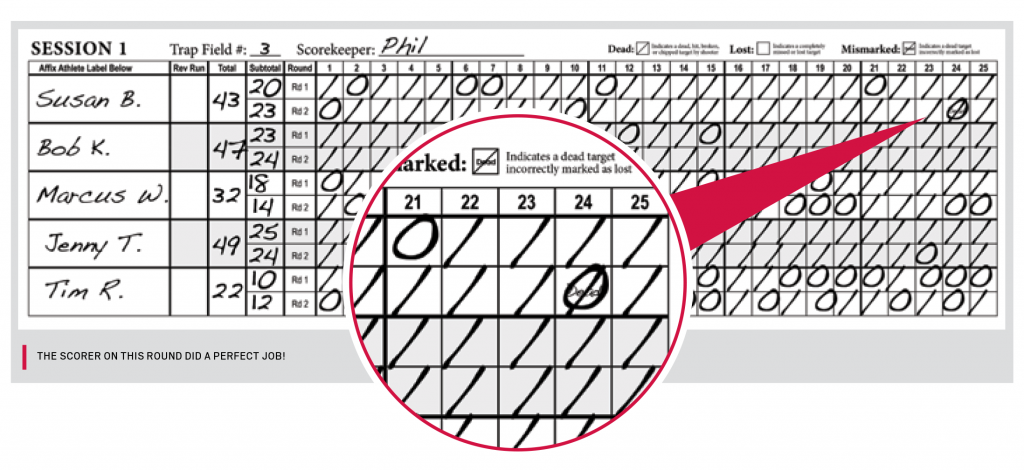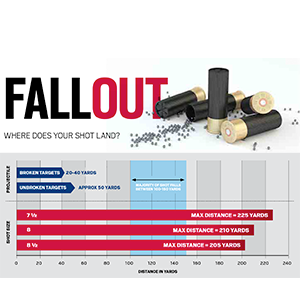
The How And Why Of Scoring On The Fly
Scoring is a tough job. It takes a considerable amount of concentration to sit up on the scoring table and watch every single target come streaking out of the house as the athletes on the squad try to break them.
Scoring also takes sharp eyes and focus. The small bits and pieces that might break off a target after a glancing hit can be hard to spot against the varied backgrounds at the shooting ranges where League events are held, and no scorekeeper wants to miss a small chip and mark a lost bird for an athlete.
Scoring also takes skill at multi-tasking. Scoring a fast squad is a challenge, as the scorekeeper must switch focus back and forth between the field and the scoresheet rapidly and repeatedly to watch the targets and record the dead and lost targets.
With so much going on during a round, it’s no wonder that scorekeepers and shooting ranges have developed a dizzying variety of scoring styles. Some use X’s and O’s, while some use pluses and minuses. Some use lines and squiggles, some use letters, and some even use numbers to mark the hits and misses on a scoresheet.
But while local ranges and scorekeepers may have varying ways to score their weekly events, tournaments are another matter. About 15,000 student athletes are expected to compete in end-of-the-season League events this spring, and if every scoring style ever devised was allowed to be used at these events, it would quickly become confusing. That’s why the League has developed specific scoring guidelines and rules that are universal to all League events nationwide.
 PROPER SCORING PROCEDURES
PROPER SCORING PROCEDURES
Every League State Tournament or Championship event uses the same scoresheets.
On the top right corner of each sheet are the instructions on how to score per League requirements.
For fairness and clarity, scorers are required to score in the following manner:
- A diagonal line through the box indicates a dead, hit, broken, or chipped target by the shooter.
- A ‘O’ in the box indicates a completely missed or ‘lost’ target.
- In the event that a dead target is mismarked as lost, the scorer MUST write DEAD inside the box. This is particularly important, as any mismarked target that has not been properly indicated is counted as a loss by event staff. who verify each scoresheet prior to entry into the League’s scoring system.
It’s important to remember that any challenges to the scorekeeper’s determination of a lost target must be initiated by the athlete before the end of the post, and that the squad leaders are responsible for verifying scoresheets at the end of the round. Once the round is complete and the scoresheet has been submitted to the officials, all scores are final. ✪



